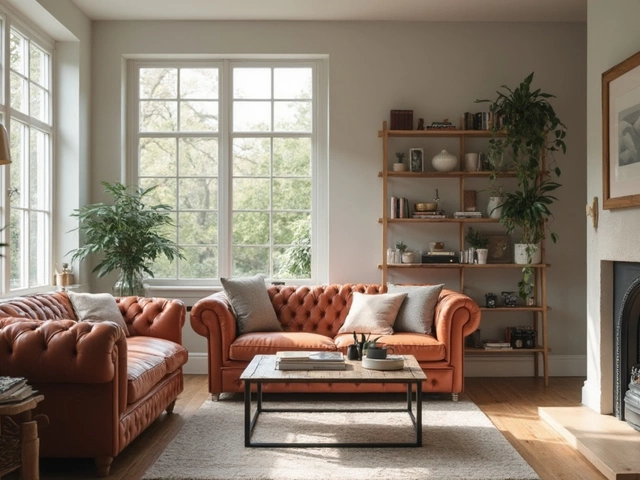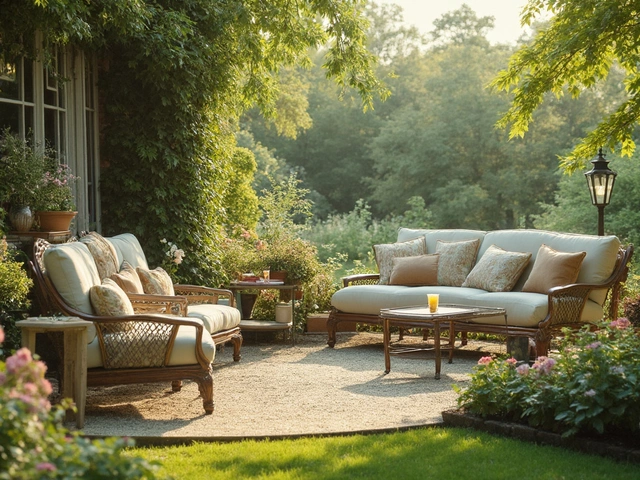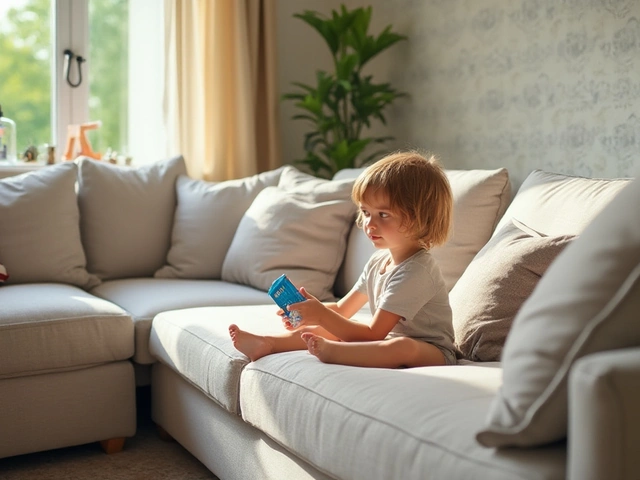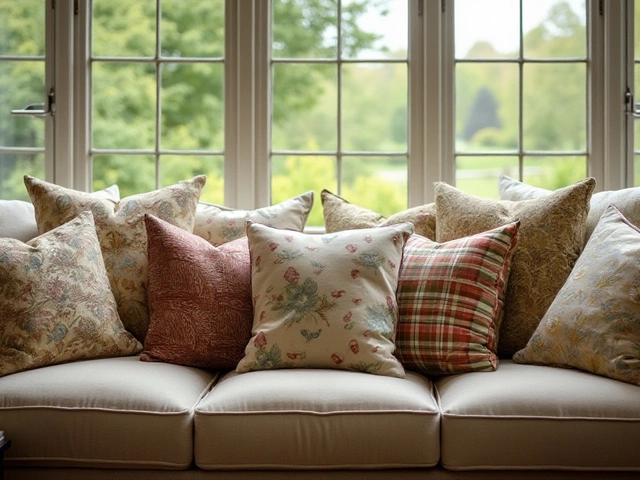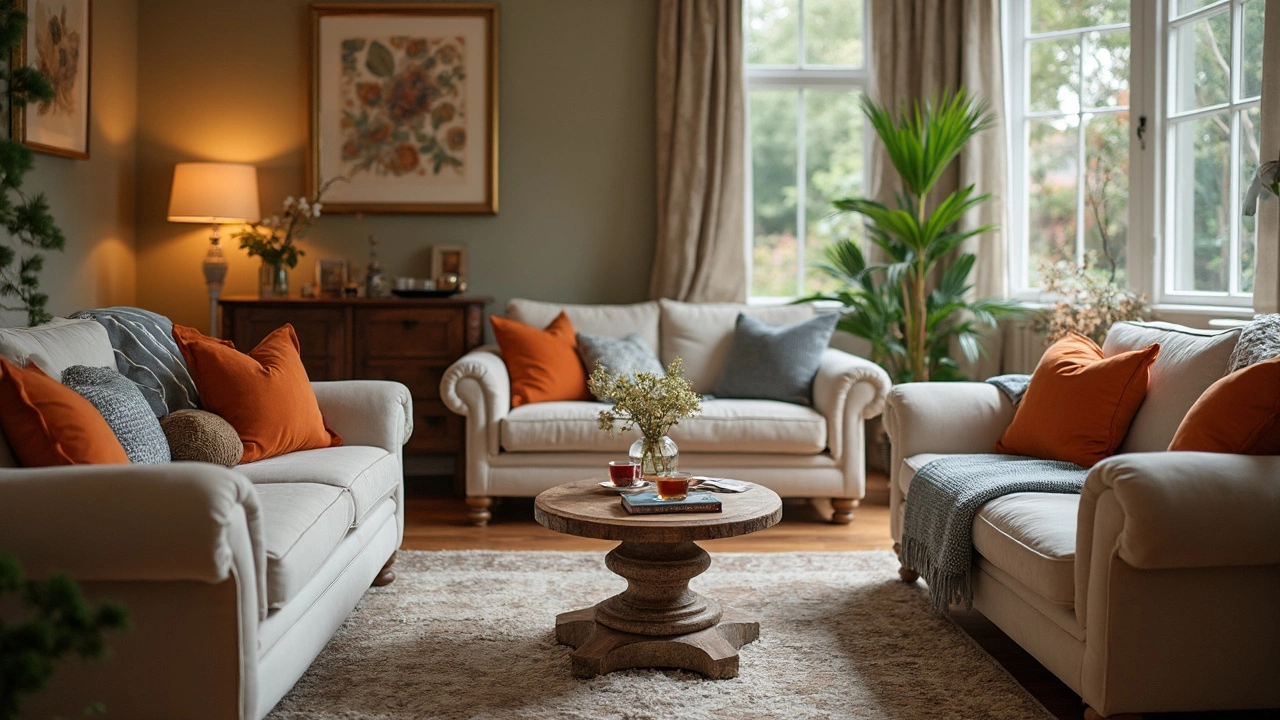 20
Feb,2025
20
Feb,2025
Getting the right spot for your coffee table can make a huge difference in your living room's vibe. It’s not just about where it looks good; it’s about how it fits into your everyday life. A coffee table should serve both style and function.
First things first, think about why you want the coffee table there in the first place. Is it for displaying that cool art book collection? Or maybe it’s just to have a handy spot to rest your cup of joe without stretching too far from the couch. The purpose will guide its placement.
You also want to consider how people move around the room. Nobody likes tripping over furniture, right? Make sure there’s a clear pathway around the table. Keep an eye on the distance from your sofa too – aim for about 18 inches. This is just close enough to reach your snacks but far enough to stretch your legs.
- The Role of a Coffee Table
- Understanding Room Dynamics
- Functional Priorities
- Traffic Flow and Accessibility
- Design Harmony
- Practical Tips for Placement
The Role of a Coffee Table
Let's talk about why a coffee table is such a game-changer in your living room. This piece of furniture is more than just a surface; it’s the anchor and centerpiece that ties the whole room together. Whether you're hosting a movie night or sipping coffee with a friend, the coffee table is the hub of activity.
Coffee Table as a Focal Point
Think of your coffee table as the gravitational center of your living space. Everything from seating arrangements to floor lamps tends to orbit around it. This central position means it should complement the room’s aesthetic while also offering functional benefits.
Functionality and Use
Functionality is key. Your coffee table plays host to everything from board games to appetizers. That’s why choosing the right shape and size matters. Rectangular tables offer lots of surface area for games and snacks, while round ones might fit better in smaller rooms, offering easier traffic flow.
Additional Storage
A coffee table with storage options means clutter-free surfaces. Look for models with shelves or drawers to stash magazines or remote controls. This ensures your living room remains tidy without sacrificing style.
Style Enhancements
Your coffee table can also be a style ambassador for your room. Whether rocking a vintage wooden look or a sleek metal-and-glass combo, it can set the tone for your entire living area. Mixing and matching materials can also add texture and depth to your decor.
Quick Stats
| Shape | Best For |
|---|---|
| Rectangular | Larger spaces, more surface area |
| Round | Smaller spaces, easy navigation |
Understanding Room Dynamics
Placing a coffee table isn't just about finding an empty spot. You need to understand your room's dynamics to make a spot sing. Room dynamics are all about how the space is used, its shape, and of course, how furniture placement affects the whole flow.
Shape and Size Matter
The size and shape of your room should be front and center when placing your coffee table. In a small, square living room, a round table can soften edges and make things feel more open. On the other hand, a rectangular table might fit just right in a long, narrow room.
Don't forget scale, either. A table that's too big can overpower the setup, while a tiny one might look lost. As a rule of thumb, your coffee table should be about two-thirds the width of the sofa it's in front of.
Traffic and Flow
Everybody hates bumping into furniture. Make sure there's enough space for people to move comfortably. Generally, aim for about 30 inches of clearance between your table and other pieces of furniture. This way, people can walk around without a hitch.
Lighting and Accessibility
Consider your room's light sources. If you've got a lovely reading lamp, position the table so you can take advantage of it. Plus, think about how you'll reach outlets for any table-side electronics.
Here's a cool fact: Survey statistics say the average living room is around 340 square feet. That's a decent workspace to test different placements and see what fits best. Remember, you want your coffee table to enhance the flow and feel cozy, not cramped.
Functional Priorities
When it comes to getting your coffee table placement right, function should be top of mind. A coffee table isn't just a pretty face; it's there to serve you day in and day out. Here’s how to align it with your everyday needs.
Accessibility
You want to make sure everything on your coffee table is within easy reach from the surrounding seating. Whether you're grabbing a magazine or setting down a drink, the distance should be comfortable. This usually means placing the table about 18 to 24 inches away from sofas or chairs.
Storage Solutions
If your space is limited or you love a neat space, consider a coffee table with storage features. Look for tables with drawers, shelves, or even hidden compartments to tuck away remotes, extra blankets, or kids' toys. Not only does this keep things tidy, but it also enhances the table's functionality.
Surface Space
The surface area of your coffee table should be proportional to the seating arrangement. If you frequently host guests, a larger table allows for more surface space for everyone’s stuff. On the other hand, if it’s just for you, smaller might be better to keep things cozy and uncluttered.
Table Height
Here’s a tip that often goes unnoticed: the height of your coffee table matters. Ideally, it shouldn't be more than 1 or 2 inches lower than your sofa seat. This makes it easy to place items down without bending too much, adding to the comfort and accessibility.
| Feature | Suggestion |
|---|---|
| Distance from Sofa | 18-24 inches |
| Table Height | 1-2 inches lower than sofa seat |
By focusing on these functional priorities, your coffee table won't just fill space; it’ll become an indispensable part of your living room setup. Remember, it's all about making the room work for you and your lifestyle!
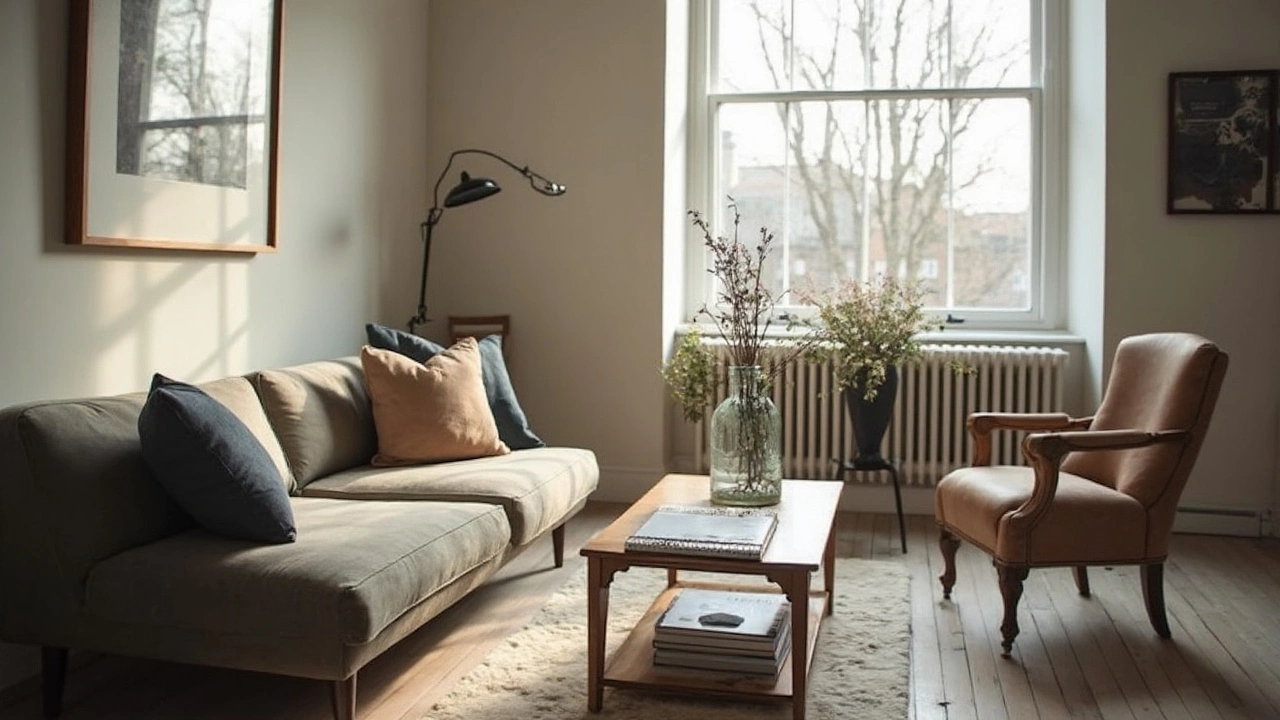
Traffic Flow and Accessibility
When it comes to setting up your living room, traffic flow and accessibility are key factors in deciding where to place your coffee table. You don’t want to create a maze that’s hard to navigate. The aim is to create an open, inviting space where people can move freely and comfortably.
Living room setup usually starts with the main seating area, often centered around a sofa or a set of chairs. Place your coffee table in a way that there's enough space to walk around it without bumping into it. Think of it this way: make sure there's at least about 2 to 3 feet of space for walkways. This distance ensures smooth passage without compromising the room's cozy feel.
Mind the Gap
The distance between your coffee table and the seating is crucial. Ideally, aim for about 18 inches from the edge of the table to the edge of the seating. This distance allows easy access to items on the table while maintaining enough room for movement.
Functional Considerations
- Make sure the table is within easy reach for anyone sitting down. That way, grabbing a drink or remote control doesn't require awkward stretching.
- If you frequently have guests over, consider a table with a smooth, rounded edge to avoid accidental bumps and bruises.
- Adjust the placement as needed. Sometimes shifting the table a few inches can optimize space usage.
Common Pitfalls
A common mistake is placing the table too close to the main walkways leading in and out of the room. It can create bottlenecks or even tripping hazards, especially if the table blends into the flooring or has a low profile that’s easy to miss.
Another point to watch out for is visual clutter. If your coffee table is surrounded by too much decor, it might look great but become a navigational nuisance. Try to keep things simple and organized.
Remember, the key is balance. You want your room to feel open yet accessible, with your coffee table as a functional centerpiece, not an obstacle.
Design Harmony
Nailing the design harmony in your living room isn’t just about choosing a sleek coffee table; it's about blending it with the rest of the room. Your table should complement your existing style while also standing out as a centerpiece. Sounds tricky, right? Let’s break it down.
Start by evaluating the color palette in your room. If your living room sports neutral tones, a coffee table with a bold color or unique texture could be your statement piece. On the flip side, if your space is vibrant, a coffee table in neutral tones can provide balance.
Material Matters
The material of your coffee table is just as crucial. Glass and metal tables often suit modern spaces, providing that airy feel. Meanwhile, wooden tables offer warmth and suit more traditional or rustic vibes. Think about durability too—especially if you have kids or pets. Nothing kills the design harmony like scratches and dents everywhere!
| Table Material | Best For |
|---|---|
| Wood | Warm, traditional settings |
| Glass | Modern, open spaces |
| Metal | Industrial lofts or minimalist spaces |
Shape and Size
The shape and size of your coffee table should fit the space without overwhelming it. Round tables can soften a room’s look and are great for smaller spaces where you need to save on floor space. Rectangular tables, however, offer more surface area—perfect if you have loads of magazines or decorative items.
Accessorizing
Finally, consider how you accessorize your coffee table. Keep it simple; you don’t want to clutter it. Use trays to group smaller items together, making it easier to move things if you need the space. Adding a small plant or a decorative bowl can add just the right pop without overdoing it.
By paying attention to these details, your coffee table won't just be a piece of furniture, but a complete part of your room’s design story. It’s about the harmony, not just the table.
Practical Tips for Placement
Getting your coffee table placement just right can bring so much joy to a room. It's all about balancing beauty with practicality. Let's get straight into some practical tips.
Measure Your Space
First things first, grab a tape measure. You don't want to end up with a table that cramps up your cozy space. Ideally, there should be about 18 inches between your coffee table and the edge of the sofa. This gives you plenty of room to walk around and still easily reach your coffee.
Consider Table Height
Make sure the height of your coffee table matches your sofa. The general rule is that your table should be approximately the same height as your sofa cushions or slightly lower. This keeps it within easy reach without looking awkwardly out of place.
Be Mindful of Room Flow
Your living room probably gets a lot of foot traffic, especially if it's the main gathering spot. Keep pathways clear so guests don’t have to navigate an obstacle course. Imagine the paths people naturally take and arrange your coffee table placement accordingly.
Shape Matters
If your room is small, consider a round coffee table. It creates softer lines and allows for smoother flow in tight spaces. For larger rooms, a rectangular table can provide more surface area without looking too chunky.
Balance with Other Furniture
Your coffee table shouldn’t live in isolation. Match it with the style and scale of your other furniture pieces to create a cohesive look. If your room has a lot of rectangles and right angles, maybe throw in a circular table for a change.
Here's a quick comparison to help decide:
| Room Type | Recommended Coffee Table Shape |
|---|---|
| Small Living Room | Round or Oval |
| Large Living Room | Rectangular or Square |
| Open Concept | Mixed Shapes |
With these tips, finding the perfect spot for your coffee table doesn't need to be stressful. Remember, it’s all about creating a space you love and feel comfortable in!
